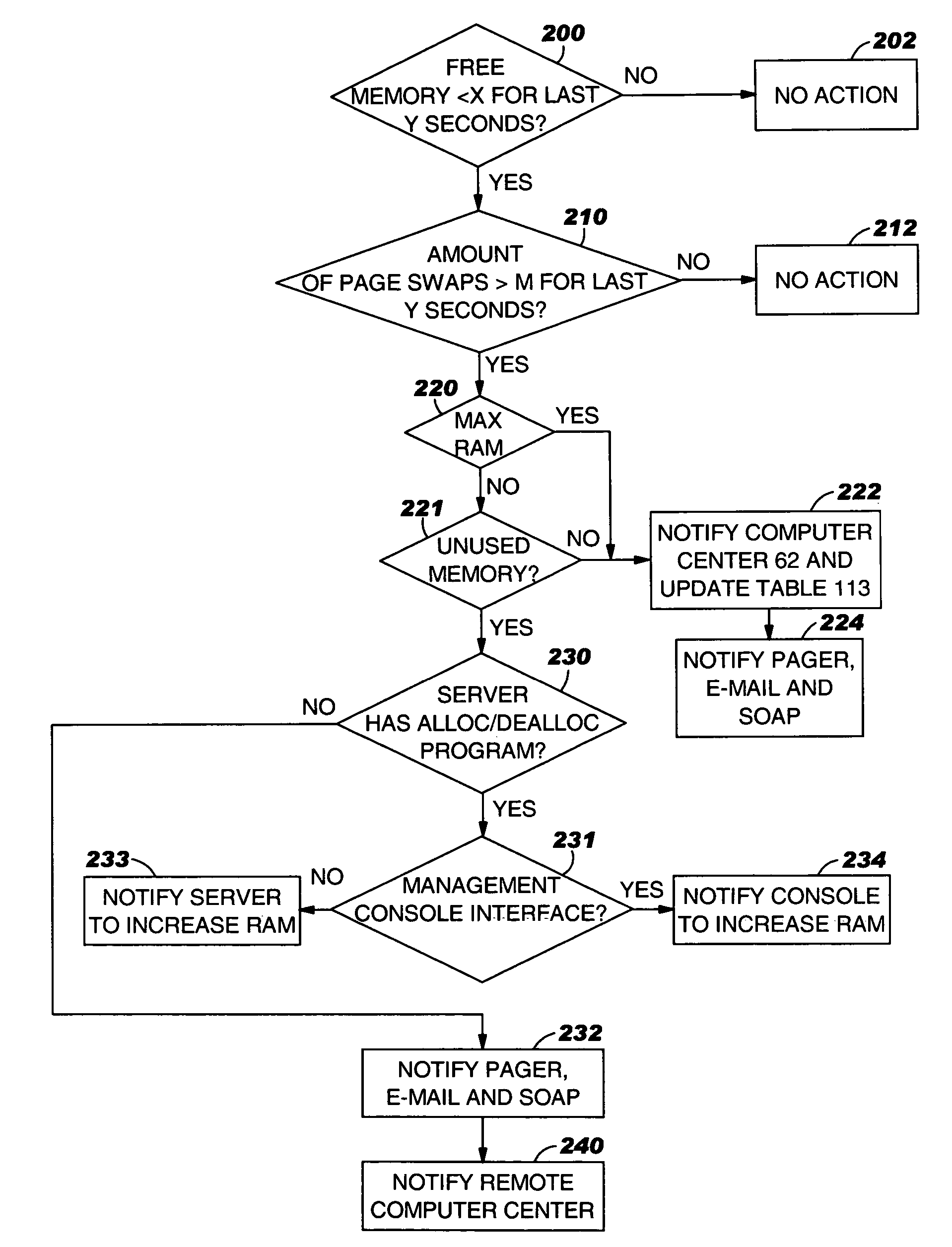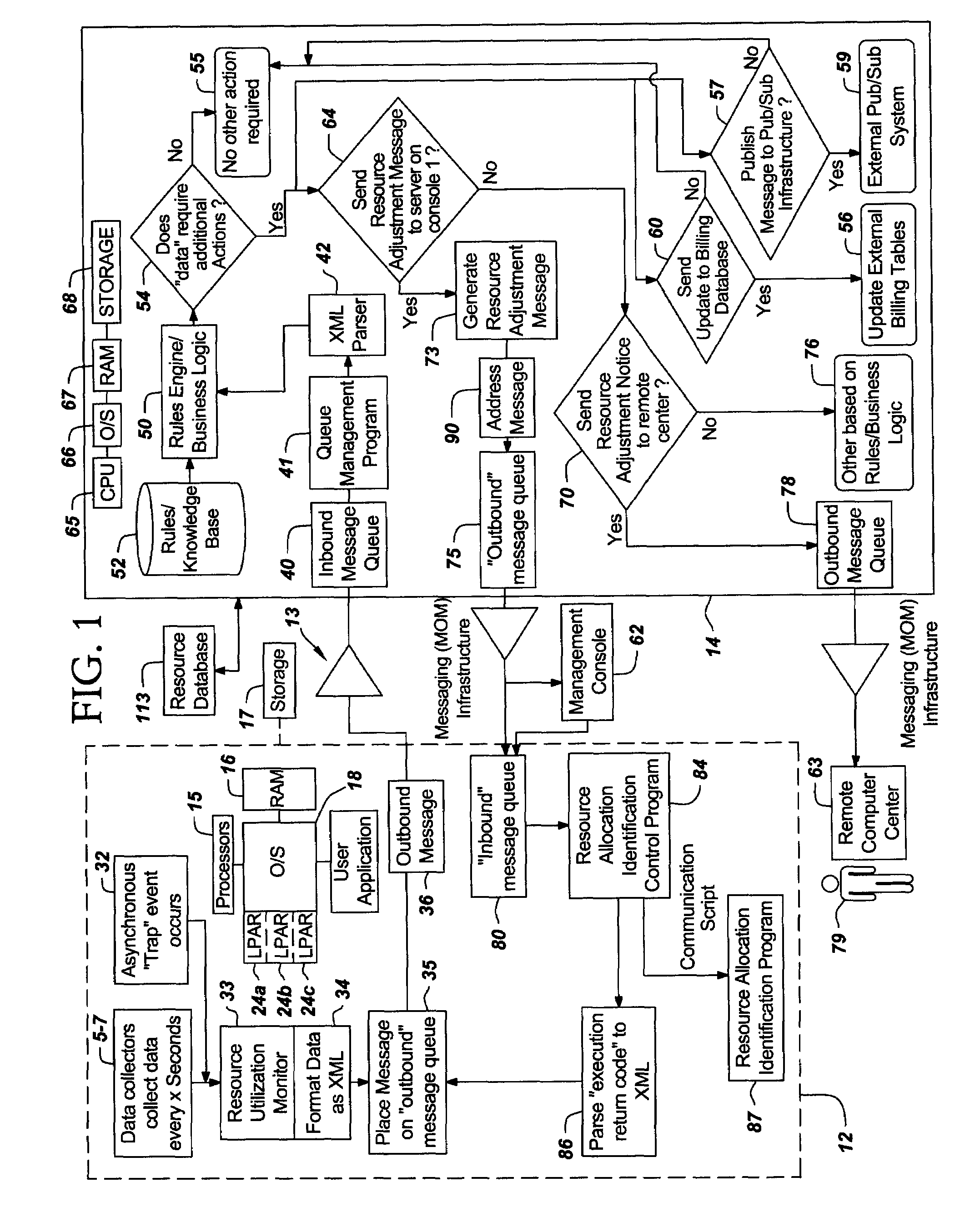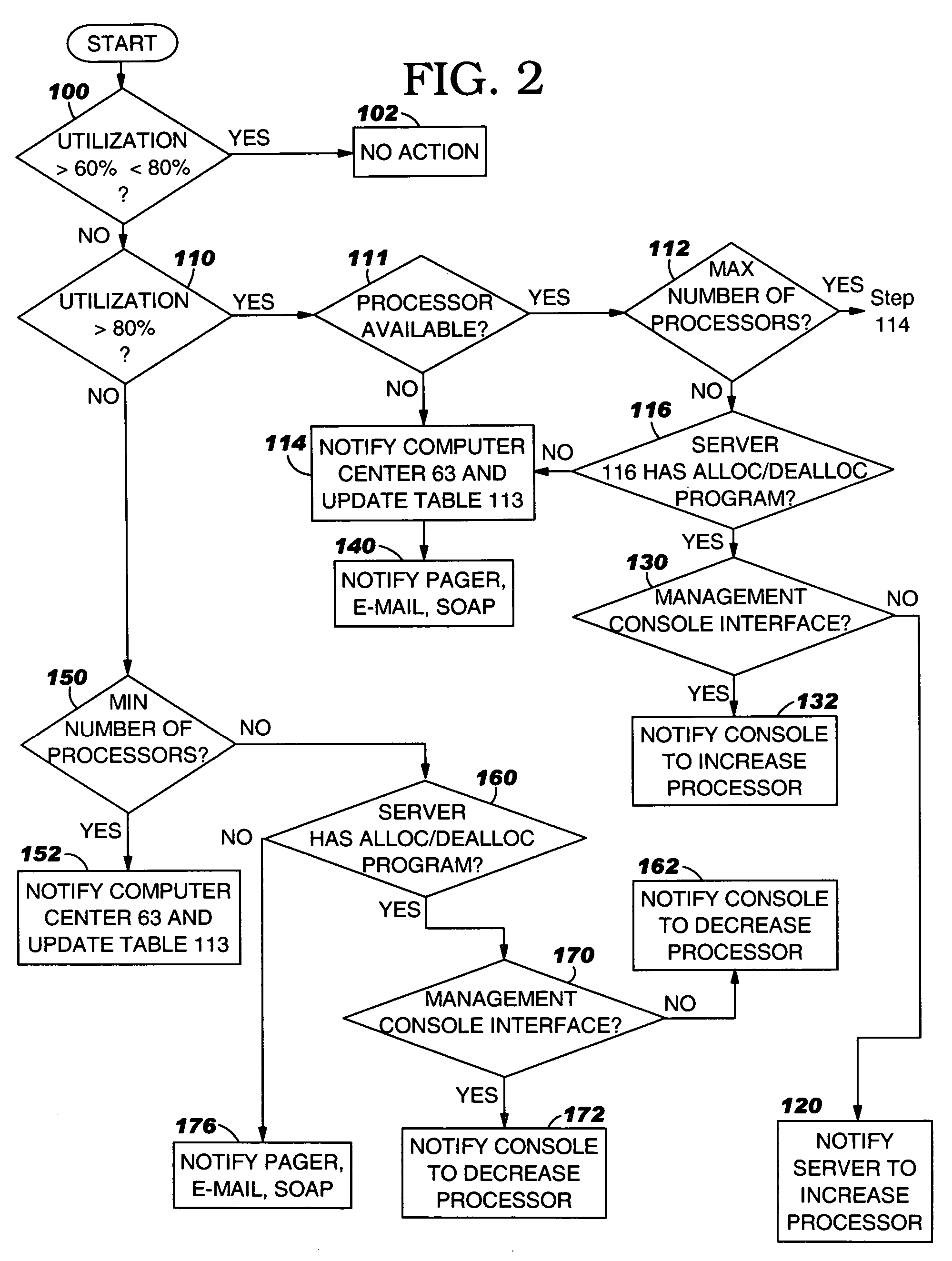System for adjusting resource allocation to a logical partition based on rate of page swaps and utilization by changing a boot configuration file
a resource allocation and resource allocation technology, applied in the field of computer systems, can solve the problems of slow execution of applications in the server, unpaid customer, de allocated processor or memory becoming unused,
- Summary
- Abstract
- Description
- Claims
- Application Information
AI Technical Summary
Benefits of technology
Problems solved by technology
Method used
Image
Examples
Embodiment Construction
[0020]The present invention will now be described in detail with reference to the figures. FIG. 1 illustrates a distributed computer system generally designated 10 according to one embodiment of the present invention. System 10 comprises a resource-managed server 12 connected by a network 13 to a resource management computer 14. Server 12 includes “resources” in the form of one or more processors 15, RAM 16, and storage 17, which can be local or remote to server 12. Server 12 also includes an operating system 18 and various user applications 21 to provide service to clients (although the nature of the service is not important to the present invention). Examples of the operating system 13 are UNIX (™ licensed by X / OPEN Company, Limited), Linux™ of Linus Torvalds), IBM z / OS, IBM z / VM or Microsoft Windows NT operating systems. Some of the operating systems such as IBM z / OS and z / VM operating system can partition server 12 into Logical Partitions (“LPARs” ) 24a,b,c, others such as Unix,...
PUM
 Login to View More
Login to View More Abstract
Description
Claims
Application Information
 Login to View More
Login to View More - R&D
- Intellectual Property
- Life Sciences
- Materials
- Tech Scout
- Unparalleled Data Quality
- Higher Quality Content
- 60% Fewer Hallucinations
Browse by: Latest US Patents, China's latest patents, Technical Efficacy Thesaurus, Application Domain, Technology Topic, Popular Technical Reports.
© 2025 PatSnap. All rights reserved.Legal|Privacy policy|Modern Slavery Act Transparency Statement|Sitemap|About US| Contact US: help@patsnap.com



